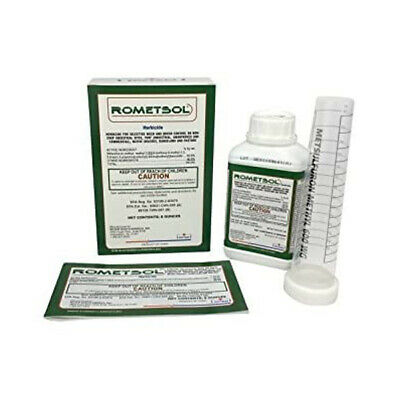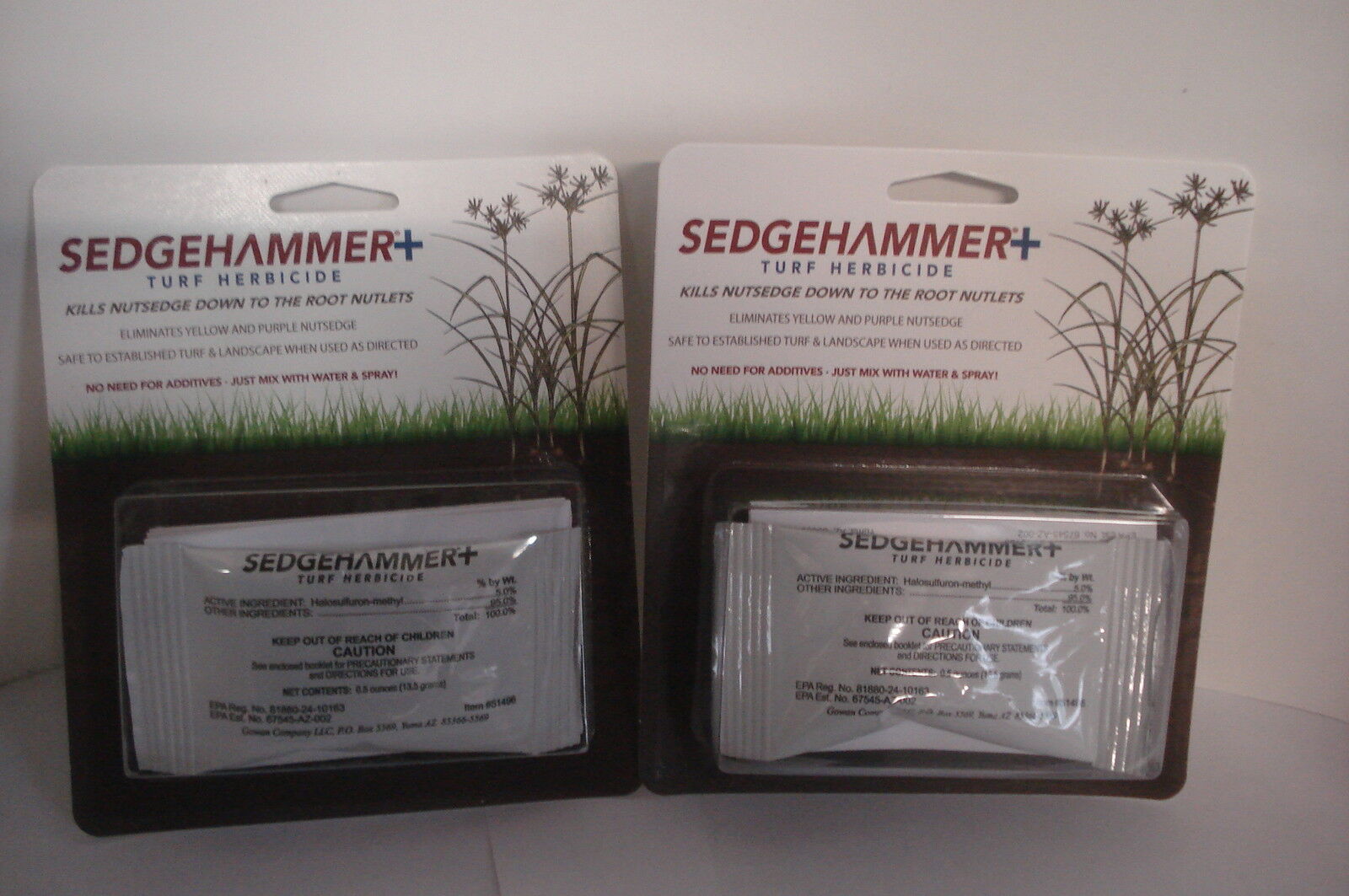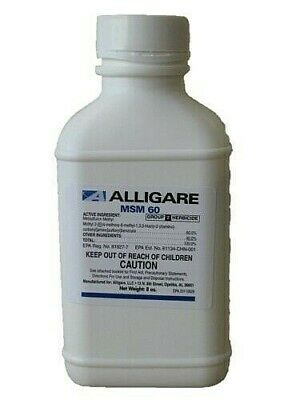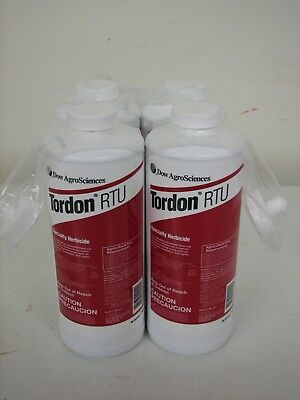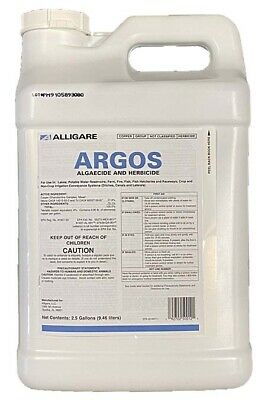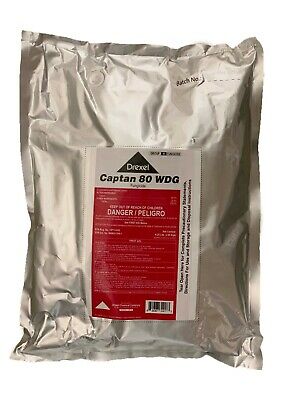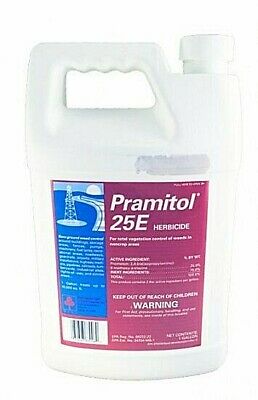-40%
Rometsol - Generic Manor (MSM Herbicide)
$ 12.14
- Description
- Size Guide
Description
Rometsol Turf Herbicide is a high-quality granular formula that helps control unwanted broadleaf and grassy weeds on ornamental turf, golf courses and sod farms. It contains 60% Metsulfuron Methyl as its active ingredient which is effective against weeds like Aster, clover, dollarweed, bahiagrass, foxtail, bittercress, henbit, buckhorn, chickweed, plantain, dandelion, and more. It is absorbed through the roots and works by blocking cell division to prevent weed growth. It is labeled for use on Bermudagrass, Kentucky Bluegrass, Fine Fescue, and St. Augustinegrass turf areas.Performance Highlights
* Non-selective weed and brush control product for non-crop industrial sites, turf, native grass areas, rangeland and pasture applications
* Controls invasive grasses and broadleaf weeds in turf
* Labeled to control over 75 species of weeds, including perennial grasses, broadleaf weeds, brush and other noxious weed species
* Key weeds controlled include: foxtail, aster, clover (white), dandelions and more
PRODUCT INFORMATION
Rometsol Herbicide is a dispersible granule that is mixed in water and applied as a spray. Rometsol Herbicide may be used for the control of annual and perennial weeds and unwanted woody plants on private, public and military lands, on rights-of-way, industrial sites, non-crop areas, ditchbanks of dry drainage ditches, certain types of unimproved turf grass, and conifer and hardwood plantations, including grazed areas on these sites. Do not use on irrigation ditches.
Rometsol Herbicide controls weeds and woody plants primarily by postemergent activity. Although Rometsol Herbicide has preemergence activity, best results are generally obtained when Rometsol Herbicide is applied to foliage after emergence or dormancy break. Generally, for the control of annual weeds, Rometsol Herbicide provides the best results when applied to young, actively growing weeds. For the control of perennial weeds, applications made at the bud/bloom stage or while the target weeds are in the fall rosette stage may provide the best results. The use rate depends upon the weed species and size at the time of application.
The degree and duration of control may depend on the following:
* Weed spectrum and infestation intensity
* Weed size at application
* Environmental conditions at and following treatment
* Soil pH, soil moisture, and soil organic matter
DO NOT make applications to natural or man-made bodies of water such as lakes, reservoirs, ponds, streams and canals.
Environmental Conditions and Biological Activity
Rometsol Herbicide is absorbed primarily through the foliage of plants and by the roots to a lesser degree. Plant cell division is generally inhibited in sensitive plants within a few hours following uptake. Two to 4 weeks after application, leaf growth slows followed by discoloration and tissue death. The final effect on annual weeds is evident about 4 to 6 weeks after application. The ultimate effect on perennial weeds and woody plants occurs in the growing season following application.
Warm, moist conditions following treatment promote the activity of Rometsol Herbicide, while cold, dry conditions may reduce or delay activity. Weeds and brush hardened off by cold weather or drought stress may not be controlled. The use of a surfactant may be applied to enhance the control of susceptible plants except where noted. Apply at a minimum rate (concentration) of 1/4% v/v (1 quart per 100 gallons of spray solution) or at the manufacturer's suggested rate. Use only EPA approved surfactants containing at least 80% active ingredient. Certain types of surfactants, such as those incorporating acetic acid (i.e. LI-700), may not be compatible with Rometsol Herbicide and may result in decreased performance. Certain surfactants may not be suitable for use on desirable plants, such as turf, listed on this label. Consult the surfactant manufacturer's label for appropriate uses. Weed and brush control may be reduced if rainfall occurs soon after application.
Effects on Weeds
Rometsol Herbicide applied to foliage of weeds rapidly inhibits growth of susceptible plants; however, typical symptoms (discoloration) of dying weeds may not be noticeable for several weeks after applications, depending on growing conditions and weed susceptibility. Warm, moist conditions following treatment enhance the activity of Rometsol Herbicide, while cold, dry conditions delay activity. Weeds hardened off by cold weather or drought stress may not be fully controlled or suppressed and regrowth may occur. Snow or rainfall received within 4 hours after application can reduce the level of postemergence weed control. Rometsol Herbicide will also affect certain seedling weeds that have emerged after application.
Degree of control and duration of effect depend on: Weed spectrum and density, weed size and variability, growing conditions prior to and following application, amount of precipitation, and spray coverage. With adequate rainfall for soil activation, short-term residual control of the more sensitive species may be obtained for a few weeks after application.
HOW TO USE
Use spray volumes of 20 to 80 gallons per acre and pressures of 25 to 35 psi at the following rates of MSM Turf Herbicide from the weeds listed below:
0.125 TO 0.25 OZ Per Acre
Ryegrass (greens)
0.25 TO 0.33 OZ Per Acre
Bittercress, Field pennycress,Blue mustard, Ground ivy (Fall), Bur buttercup, Parsley-piert, Chickweed, Prostrate spurge, Chicory, Redstem filaree, Clover (white), Spurweed, Creeping beggarweed, Wild carrot, Dandelion
0.33 TO 0.5 OZ Per Acre
Annual sowthistle, Ryegrass (fairways), Aster, Seedling dogfennel, Carolina geranium, Shepherdspurse, Common yarrow, Smooth pigweed, Crown vetch, Smallseed falseflax, Florida betony, Sweet clover, Ground ivy (Spring*), Tansy mustard, Henbit, Treacle mustard, Lambsquarters, Tumble mustard, Lespedeza, Wild celery, Miners lettuce, Wild garlic, Plantain, Wild lettuce, Prickly lettuce, Wild onion, Ragweed, Woodsorrel (oxalis), Redroot pigweed
0.25 TO 0.75 OZ Per Acre
Bahiagrass*
0.5 TO 1 OZ Per Acre
Brazil pusley, Florida pusley, Buckhorn plantain, Foxtail, Canada thistle**, Hoary cress (whitetop), Curly dock, Kochia, Common groundsel, Pennsylvania smartweed, Common purslane, Plantain, Common sunflower, Prostrate knotweed, Sida (southern), Dogfennel, Virginia buttonweed***, Dollarweed*, Wild mustard
* A repeat application may be required in 4 to 6 weeks.
** Suppression only involving a visual reduction in competition compared to an untreated area.
*** Controls seedling Virginia buttonweed. Suppression only of more mature plants. Repeat application may be required in 4 to 6 weeks.
The required amount of MSM Turf Herbicide should be added when the spray tank is half full of water and, with agitator running, add the proper amount of product. Finish adding the required amount of water. Continuous agitation is required to keep the product in suspension.
Spray preparations of this product may degrade in acid solutions if not used in 24 hours; it is stable in alkaline solutions. Thoroughly re-agitate before using.
Tank mixes with other registered herbicides should be tested for compatibility before full scale mixing. Use mechanical or bypass agitation to thoroughly mix the spray suspension. It is not necessary to premix this product with water in a separate container prior to adding it to the spray tank. This product should always be added to the tank first, before any other herbicides or adjuvants.
Kentucky Bluegrass and Fine Fescue:
Apply 0.25 to 0.5 oz of MSM Turf Herbicide per acre for control of the listed weeds. Do not exceed a total of 0.5 oz per acre within a 9-month period.
St. Augustinegrass, Bermudagrass and Zoysiagrass (Meyers and Emerald):
Apply 0.25 to 1.0 oz of MSM Turf Herbicide per acre for weed control. Some chlorosis or stunting of the turfgrass may occur following application.
Bahiagrass Control:
For the selective control of Bahiagrass in Bermudagrass turf, use 0.25 to 0.75 oz of MSM Turf Herbicide per acre. Use the higher rates of the range on Argentine, Common and Paraguayan Bahiagrass. Apply a repeat treatment in 4 to 6 weeks if necessary. Some chlorosis or stunting of the Bermudagrass may occur following the application.
Centipedegrass:
Apply 0.25 to 0.5 oz of this product per acre for weed control. Some chlorosis or stunting of the turfgrass may occur following the application.
IMPORTANT: Addition of a nonionic surfactant of at least 80% active ingredient at 0.25 percent by volume (1 qt/100 gal) provides maximum performance, but may temporarily increase chlorosis of the turf. Allow one week between the application of MSM Turf Herbicide and other pesticide products. (This guideline can be relaxed where a
severe insect or disease attack requires immediate treatment.)
